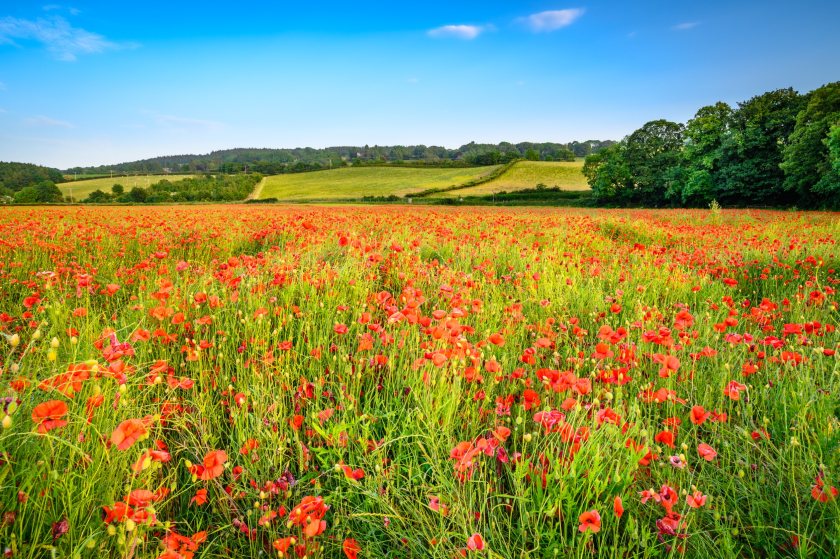
Almost 20 months since the last Countryside Stewardship (CS) Higher Tier application window closed, Defra has finally announced its future plans for the scheme.
In this article, David Morley, environment and conservation manager at H&H Land & Estates, dissects the latest CS update from the government.
For those farmers and landowners that have already been waiting over a year to make an application, it is not good news.
Higher Tier will remain shut for new applications until 'the summer' of 2025, and even then it will be by invitation only.
It will be Natural England, the government’s conservation advice body, that will decide when individual applications can be submitted, not the farmer.
This disappointing news is the latest in a sequence of dispiriting policy decisions by the government.
In the budget, it was quietly announced that de-linked Basic Payments for 2025 are to be slashed to less than 25% of their original value, with a maximum payment of just £7,200 applying to all claimants.
More recently, Defra announced that the CS Capital Grant scheme would be suspended, with no new agreements having been issued since early October.
It appears the Capital Grant Scheme has been a victim of its own success, with higher than expected numbers of farmers seeking to take advantage of grants to improve water quality and enhance their network of hedgerows.
The re-vamped Higher Tier scheme will include some 99 revenue options - or actions, as Defra now likes to call them - plus 33 supplements.
There will also be a range of capital items designed to specifically support Higher Tier agreements.
While there are some new actions, many are fundamentally the same as the old scheme and payment rates are largely unchanged.
This begs the question why the original scheme could not have been allowed to run for another year.
New actions include:
• Manage medium or high density agro-forestry (£595 to £849 per ha)
• Manage species-rich floodplain meadows (£1,070 per ha)
• Connect river & floodplain habitats (£1,242 per ha)
• Permissive open access (£92 per ha) and permissive footpaths & bridleways (£77 to £221 per 100 metres)
There are also a number of options available through Higher Tier that mirror equivalent actions in the Sustainable Farming Incentive (SFI) scheme, but where some adaptation by a Natural England advisor is required.
One area of more significant change lies in the scheme structure for moorland management.
While the general moorland management payment remains the same at £55 per ha, this can now be stacked with payments for specific stocking rates (£20 to £66 per ha) and combined shepherding and off-wintering actions (£33 to £48 per ha).
For most moorland and common land with “priority” habitats, it should be possible to attract a combined payment per hectare of at least £108.
That is significantly more than has been available through either previous iterations of Higher Tier or older Higher Level Stewardship (HLS) schemes.
This suggests moorland agreement holders will now want to switch to the new scheme at the earliest opportunity.
Although applications cannot be submitted until the summer, Natural England will be providing pre-application advice from January to those farmers that are being invited to submit an application.
Potential applicants that will be prioritised for an invitation include:
• Farmers with an existing CS Higher Tier agreement that expires in 2025
• Other CS Higher Tier or Higher Level Stewardship agreement holders
• Woodland managers with an approved Woodland Management Plan
• Applicants who are already engaged in discussion with Natural England and are already undertaking pre-application feasibility studies or implementation plans
Anyone wishing to apply for Higher Tier that does not fall into any of these categories will have to wait until at least February 2025 before there is any guidance as to how they will be able to access the scheme.
Ultimately, the number of applications that can be made will be constrained by the resources available at Natural England, which are at a historic low in many parts of the country.
This will unfortunately limit the ambition of the Higher Tier scheme for the foreseeable future.
One positive note is that, once open, the scheme will have a rolling application window and rolling start dates.
This means agreements can start every month and not just on 1 January, as under the old scheme.
As with SFI, Higher Tier applications will be submitted online through the Rural Payments portal, which should enable the Rural Payments Agency to process applications quickly and efficiently.
In addition, payments will be made on a quarterly basis helping with cash flow.
While this week’s announcement about CS Higher Tier contains a huge amount of detail on the options that farmers will eventually be able to apply for, it provides no new information on how existing HLS agreement holders can switch to the new scheme without penalty.
This leaves many farmers, especially those in the uplands, trapped in poorly-paying legacy schemes with a dwindling Basic Payment and no means of making up this lost income.
It is these farmers, who have demonstrated a long-term commitment to delivering environmental enhancement, that are being unfairly penalised through restricted access to the updated CS Higher Tier scheme.
